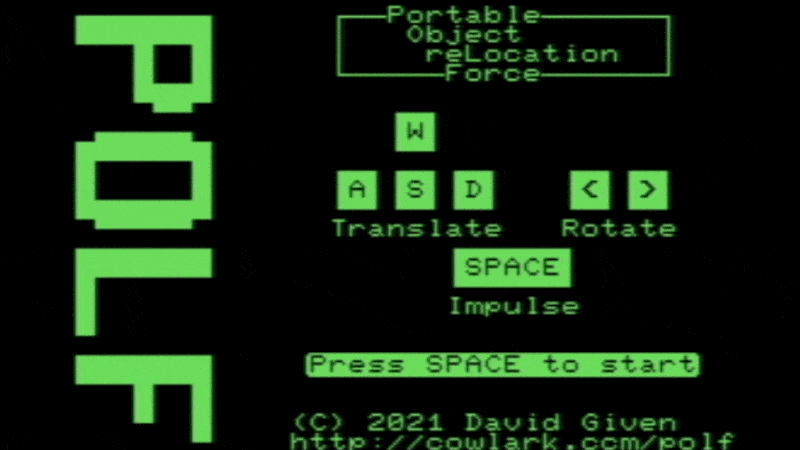Got a retrocomputing itch? So does [David Given], and luckily for us all he indulged it by writing POLF: a first-person 3D game for the Commodore PET that uses only the system’s 40×25 text mode character display for visuals. It’s a fantastic achievement, considering that the 80s-era computer boasts 32 kB of memory and doesn’t even have a graphical display.

Each level in POLF is a small, maze-like room in which one’s goal is to play a sort of cross between billiards and golf, aiming to move the round “ball” object into the square “hole” object. The 3D view is rendered using raycasting, which is a way of efficiently drawing a workable 3D perspective using limited resources. Raycasting can only do so much, but as a method it works fantastically within its limitations, and there are useful tutorials out there that lay the process bare.
The GitHub repository for the project is here, and it should run on any 40-column screen PET with at least 16 kB of RAM. Watch it in action in the video, embedded below. (Hint: the little bar graphs under the compass headings at the bottom of the screen represent the player’s proximity to the ball and hole objects. )
















32k of RAM? Man, wish my pet had that much.
The graphics remind me of playing 3D Monster Maze on the ZX81. Though the ZX81 graphics were probably higher resolution.
https://www.youtube.com/watch?v=tGf4jdRbCuk
The resolution of the ZX81 is 64X48 so not that much higher.
The subtitles are a brilliant idea and the game actually seems suspenseful! Very good use of the hardware and an example of restriction fosters creativity. This is subjectively the most impressive ZX81 game I have seen, even rivalling the Chess engine which exists for it. Which really messed with my mind at the time, having tried to write a chess engine on a computer (MSX) with 30 times more RAM available. (Actually it has even more but I didn’t know how to do bank switching.)
I remember playing a similar (or maybe the same) game on the TRS-80 at school.
Interesting game concept. Looks pretty smooth too, cool!
Which Commodore Pet? There were 2 of them, and I had one of the very obscure ones. A kit that was produced and sold by some guy and he only sold about 60 of them in 1972. It used an Intel 8008 processor and looked much like an Imsai (although Imsai would not come out for 3 more years). He probably only sold 60 because the PCB was full of errors, I had to cut and jumper about 30 traces to get it working. And the RAM was absurdly expensive. It was my first computer and got me started in the fields of electrical, computer, and software engineering.
A kit “produced and sold by some guy” doesn’t sound like a Commodore product. Are you sure it wasn’t something else?
They did sell the KIM-1 before the PET, but that wasn’t until 1976, had a 6502, and sold in much larger numbers.
So its more like sokoban in 3D, but on a PET.
Sokoban was my first thought too
This would have blown people away 40 years ago, and still does.